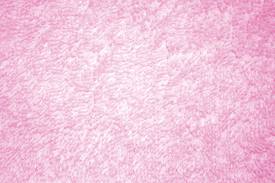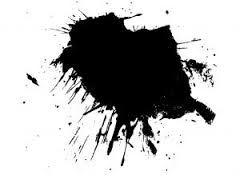the color pink
 Before I was diagnosed with breast cancer, I was indifferent to the color pink. It was fine, but I didn’t wear it often because it made me feel like I was wearing a gender-specific cliche. (Think Reese Witherspoon in Legally Blonde.)
Before I was diagnosed with breast cancer, I was indifferent to the color pink. It was fine, but I didn’t wear it often because it made me feel like I was wearing a gender-specific cliche. (Think Reese Witherspoon in Legally Blonde.)
After I was diagnosed with breast cancer, I hated pink. Lots of people gave me kind gifts when I was going through surgery and chemo. Fleece blankets, sweatshirts, soft caps to cover my bald head, mugs, and flowers -- but they were nauseatingly pink.
Looking back, I think I resented the color because it assigned me to a disease I hated. The color marked me -- and whatever genes had gone haywire in my body -- as defective, like the black X they put on the tag of defective clothes. The color of the gifts felt presumptuous, as if people assumed that because I had breast cancer, pink was automatically my new favorite color.
But it wasn’t.
When I was hospitalized for a massive lung infection shortly after I finished seven grueling months of treatment, an art therapist came to my room and asked me if I’d like to paint my emotions. She offered me a pastel palette of watercolors and a blank canvas. She suggested I might like to draw something serene and calming, like a beach at sunrise or a kitten playing with a ball of yarn.
I told her I didn’t want a dainty plastic pastel palette; I wanted gallons of black paint and an empty room. I
wanted to hurl the slimy blackness at the unsuspecting white walls. I wanted the four corners to feel my pain.
When I was in my mid-twenties, I thought I was safe, and my future was bright and promising. And then my right nipple started bleeding and my biopsy came back with cancer cells, which kept growing in spite of all the treatments I was on, and while I was fighting for my life, I lost everything and almost everyone I cared about.
During those seven months, I kept telling myself that if I could just make it through the treatment course, I’d be home free and I could get back to my life. But when I got to the end of the tunnel, there was no light. There was still oppressive darkness -- getting the call from my doctor that chemo had shut down my ovaries and I’d never be able to have children. Learning that I’d have to be on anti-cancer meds for the next five years. Finding out at the end of those five years that the research had changed, and I had to stay on these meds that cause joint aches and insomnia and hot flashes for five more years.
I continued to hate the color pink because it was naive and childish. I was fighting for my life, fighting off the demons of cancer, as well as depression and despair that threatened to suffocate my soul.
What fighter ever wore pink into the ring?
Last week I flew to Utah to go hiking in the wilderness with a friend. I packed jeans and hiking pants, but forgot to pack shorts, so we stopped at a store to buy some. In the juniors section I found shorts that fit well -- except they were pink. I realized I had also forgotten to pack a sweatshirt so I went to find one of those, too. But again, the only ones that fit were all pink.
Dammit, I thought as I looked at myself in the dressing room mirror, feeling like a pastel monolith.
I sat down on the bench in the dressing room, fighting off the negative emotions and memories I had just from looking at the color. And then I remembered all the pink I’d seen when I was going through the five surgeries I had to carve out all the cancer cells from my chest. Not pink memorabilia, but the bandages that covered my scars.
When the nurses changed the bandages, they were crisp and white. But as my surgical scars oozed blood from their healing edges, the red fluid mixed with the white fabric and the bandages became pink.
As I looked at myself in the mirror, still wearing the pink sweatshirt and shorts, the color took on a whole new meaning. It no longer had a childish or feminine overtone. It was now a symbol that made hope rise in my chest. It was where the red blood from trauma and pain encountered new bandages of healing. It was where my violent disease met compassionate white flags of peace.
Pink meant I was a fighter. Pink meant I almost died, and then came back to life. Pink meant that no matter how much pain I’d been in, healing had always shown up to soothe the scars.
As I write this I’m wearing that sweatshirt I bought in Utah, and as I look down at my chest that’s covered by the soft fabric, pink reminds me that in spite of all the losses I’ve endured, the bleeding is now stanched.
And hope is on its way.

